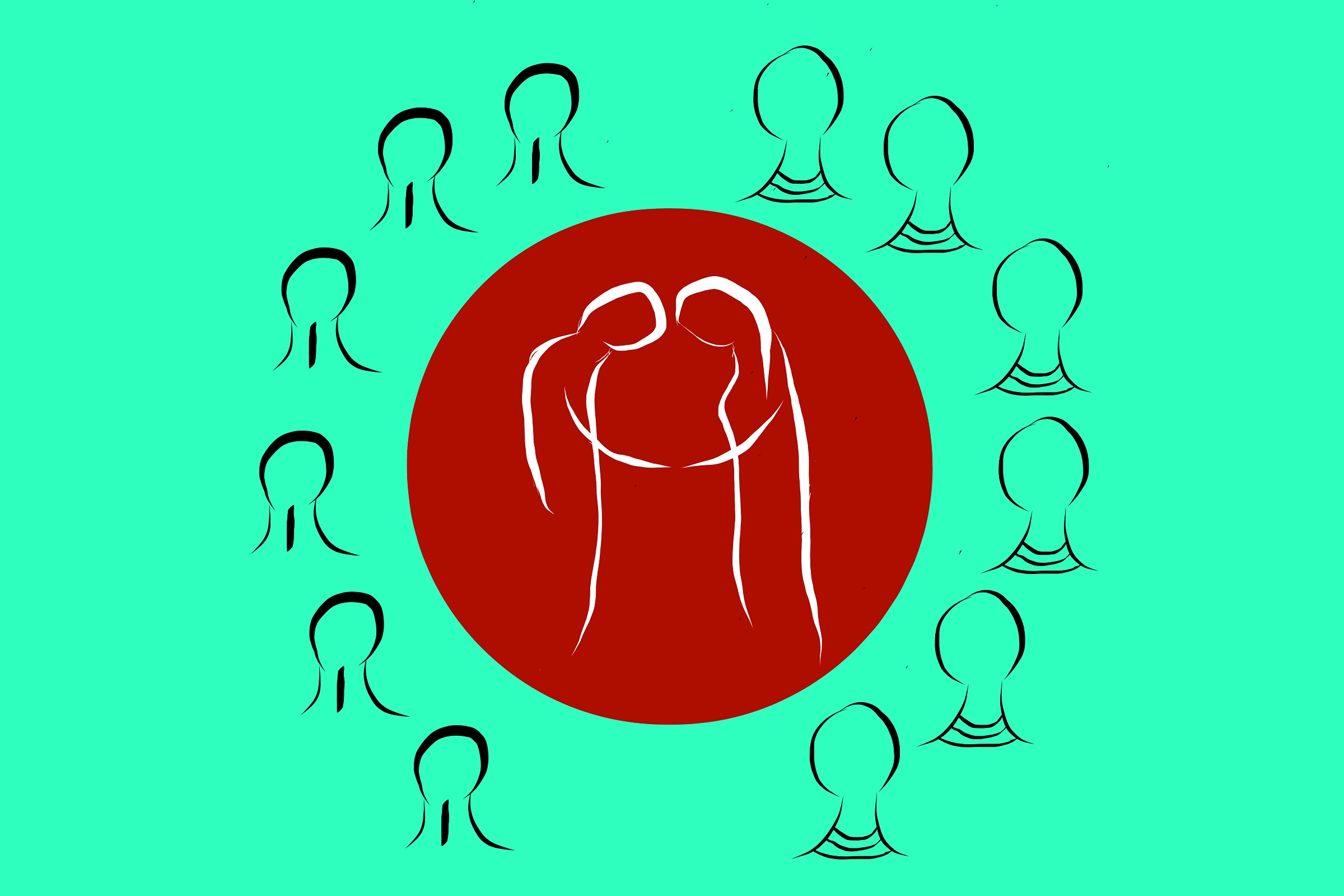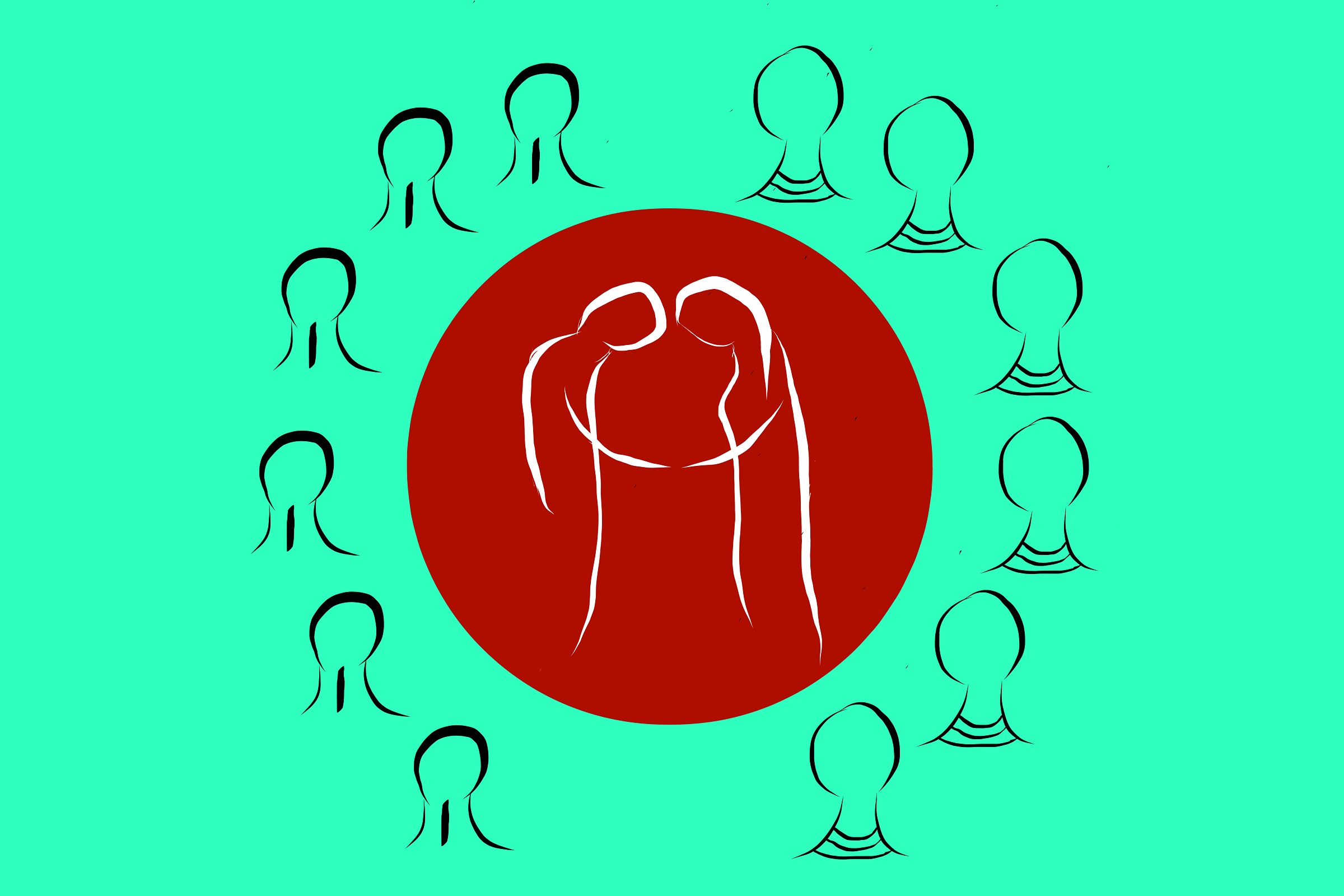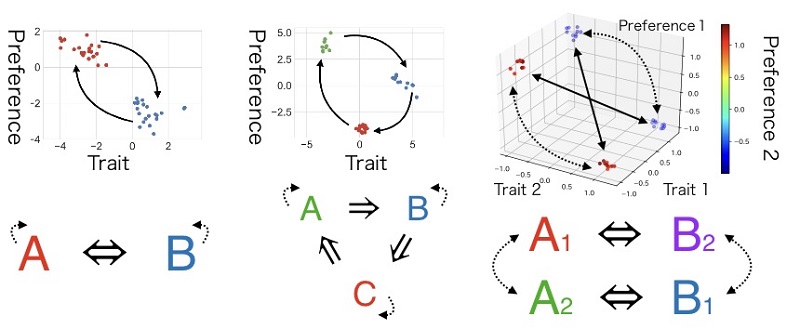How social structures emerge Computer simulations uncover universality in cultural anthropology observations Research news


Illustration of communities joining through a marriage. © Caitlin Devor, University of Tokyo, CC BY 4.0.
What rules shaped humanity’s original social networks? Researchers in Japan developed new mathematical models to understand what conditions produced traditional community structures and conventions around the world, including taboos about incest.
“We think this is the first time cultural anthropology and computer simulations have met in a single research study,” said Professor Kunihiko Kaneko, an expert in theoretical biology and physics from the University of Tokyo Research Center for Complex Systems Biology.
Researchers used statistical physics and computer models common in evolutionary biology to explain the origin of common community structures documented by cultural anthropologists around the world.
The earliest social networks were tightly knit cultural groups made of multiple biologically related families. That single group would then develop relationships with other cultural groups in their local area.
In the 1960s, cultural anthropologists documented social networks of indigenous communities and identified two kinship structures common around the world. In areas with hunter-gatherer communities, anthropologists documented direct-exchange kinship structures where women from two communities change places when they marry. In areas with agrarian farming communities, kinship structures of generalized exchange developed where women move between multiple communities to marry.

Researchers used computer simulations based on principles of statistical physics and evolutionary biology to model how human societies would form under different conditions. Direct-exchange (left), generalized-exchange (center), and restricted-exchange (right) social structure models observed by cultural anthropologists in the 1960s are represented graphically. © Kenji Itao, University of Tokyo, CC BY 4.0.
“Anthropologists have documented kinship structures all over the world, but it still remains unclear how those structures emerged and why they have common properties,” said Kenji Itao, a first year master’s degree student in Kaneko’s laboratory, whose interdisciplinary interests in physics, math and anthropology motivated this research study.
Experts in anthropology consider the incest taboo to be an extremely common social rule affecting kinship structures. The ancient incest taboo focused on social closeness, rather than genetic or blood relationships, meaning it was taboo to marry anyone born into the same cultural group.
Itao and Kaneko designed a mathematical model and computer simulation to test what external factors might cause generations of biologically related families to organize into communities with incest taboos and direct or generalized exchange of brides.
“Traditionally, it is more common for women to move to a new community when they marry, but we did not include any gender differences in this computer simulation,” explained Itao.
Simulated family groups with shared traits and desires naturally grouped together into distinct cultural groups. However, the traits the group possessed were different from the traits they desired in marriage partners, meaning they did not desire spouses similar to themselves. This is the underlying cause of the traditional community-based incest taboo suggested by the study.
When the computer simulation pushed communities to cooperate, generalized exchange kinship structures arose. The simulation demonstrated different kinship structures, including the direct exchange basic structure, emerge depending on the strength of conflict to find brides and the necessity of cooperation with specific other communities.
"It is rewarding to see that the combination of statistical physics and evolution theory, together with computer simulations, will be relevant to identify universal properties that affect human societies," said Kaneko.
The current computer model is simple and only included factors of conflict and cooperation affecting marriage, but researchers hope to continue developing the model to also consider economic factors that might cause communities to separate into different classes. With these additions, the theory can hopefully be extended to explore different communities in the modern, global society.
"I would be glad if perhaps our results can give field anthropologists a hint about universal structures that might explain what they observe in new studies," said Itao.
Papers
Kenji Itao and Kunihiko Kaneko, "Evolution of kinship structures driven by marriage tie and competition," Proceedings of the National Academy of Sciences of the United States of America (PNAS): January 20, 2020, doi:10.1073/pnas.1917716117.
Link (Publication )
)





